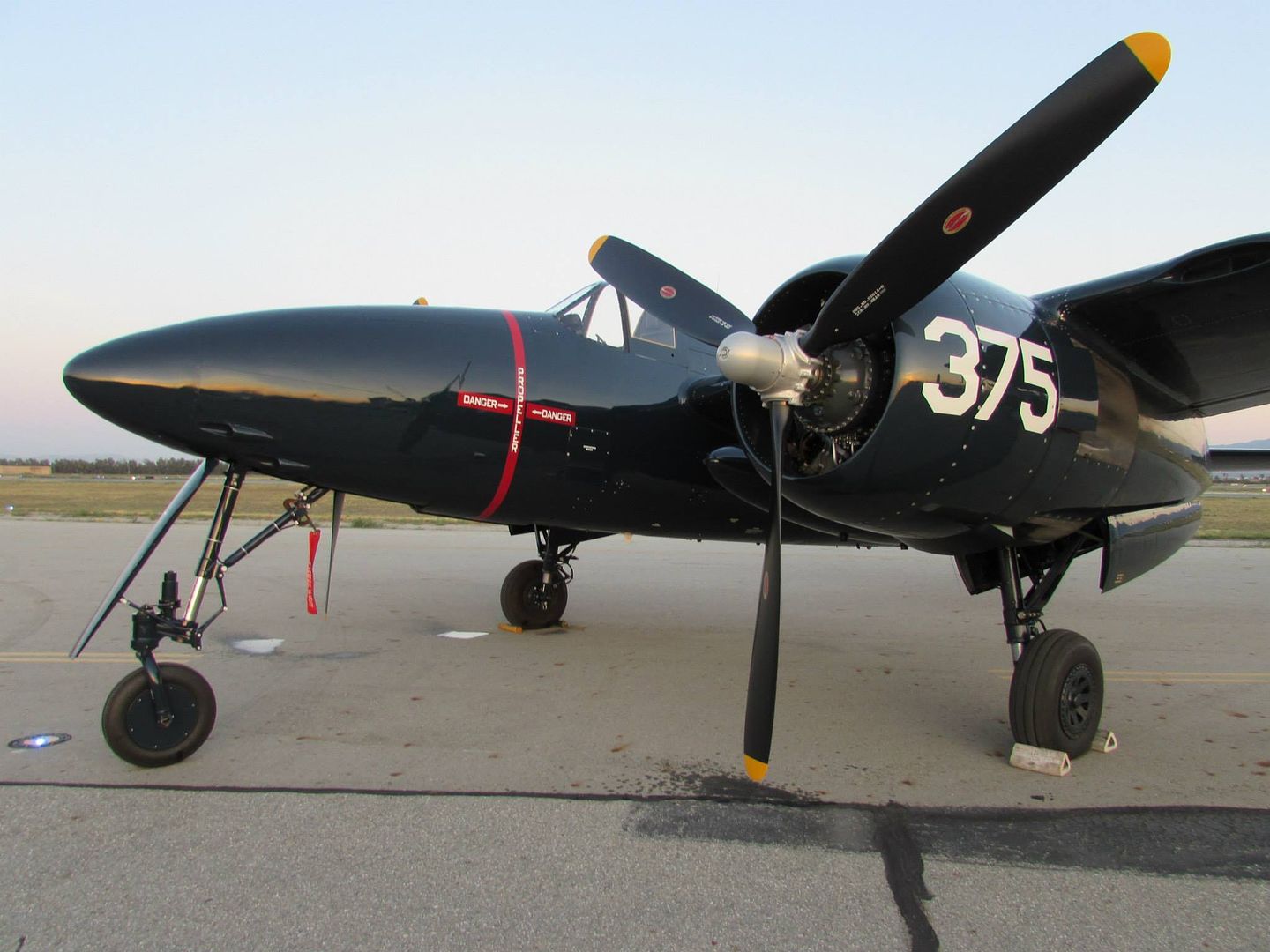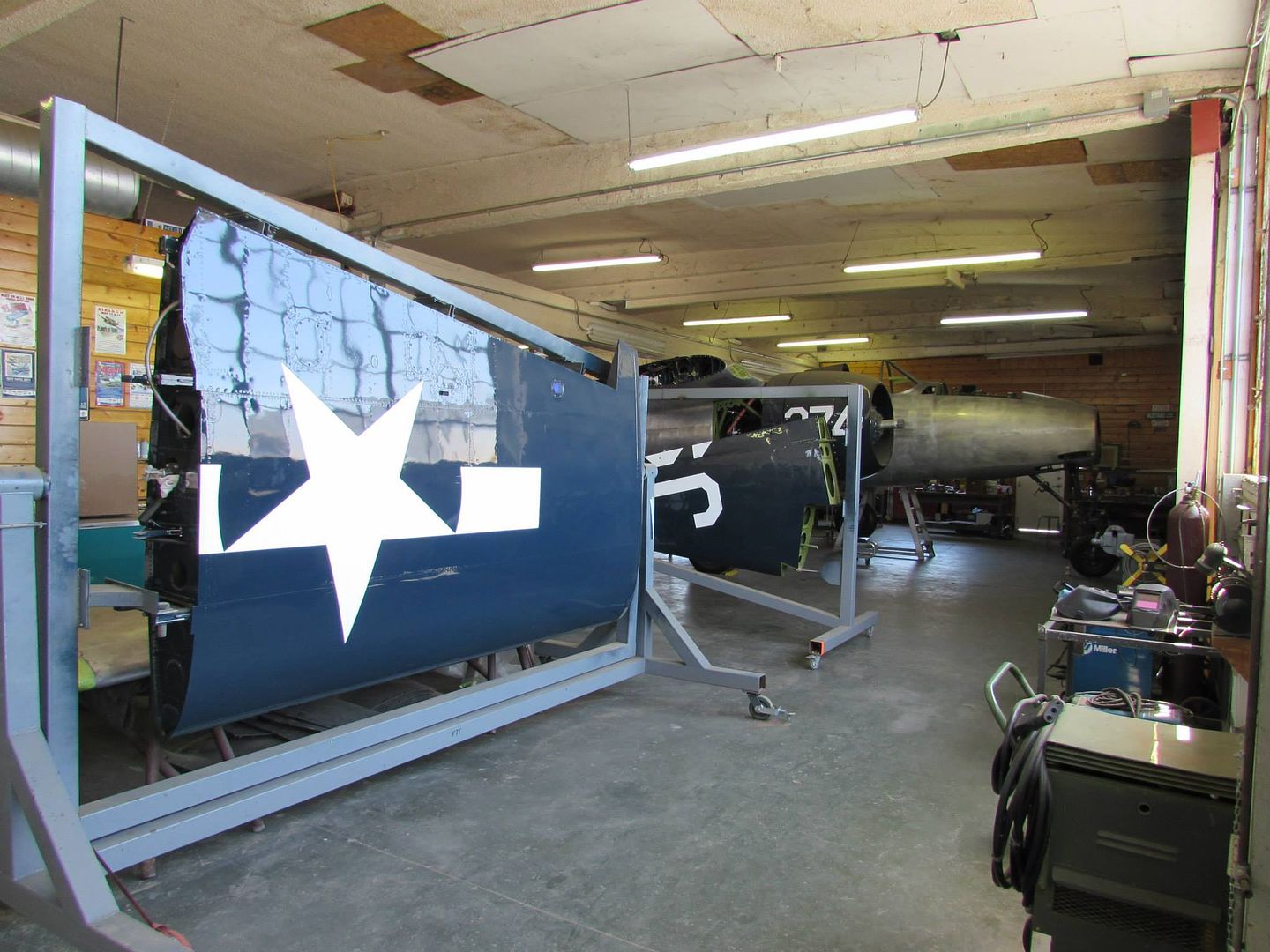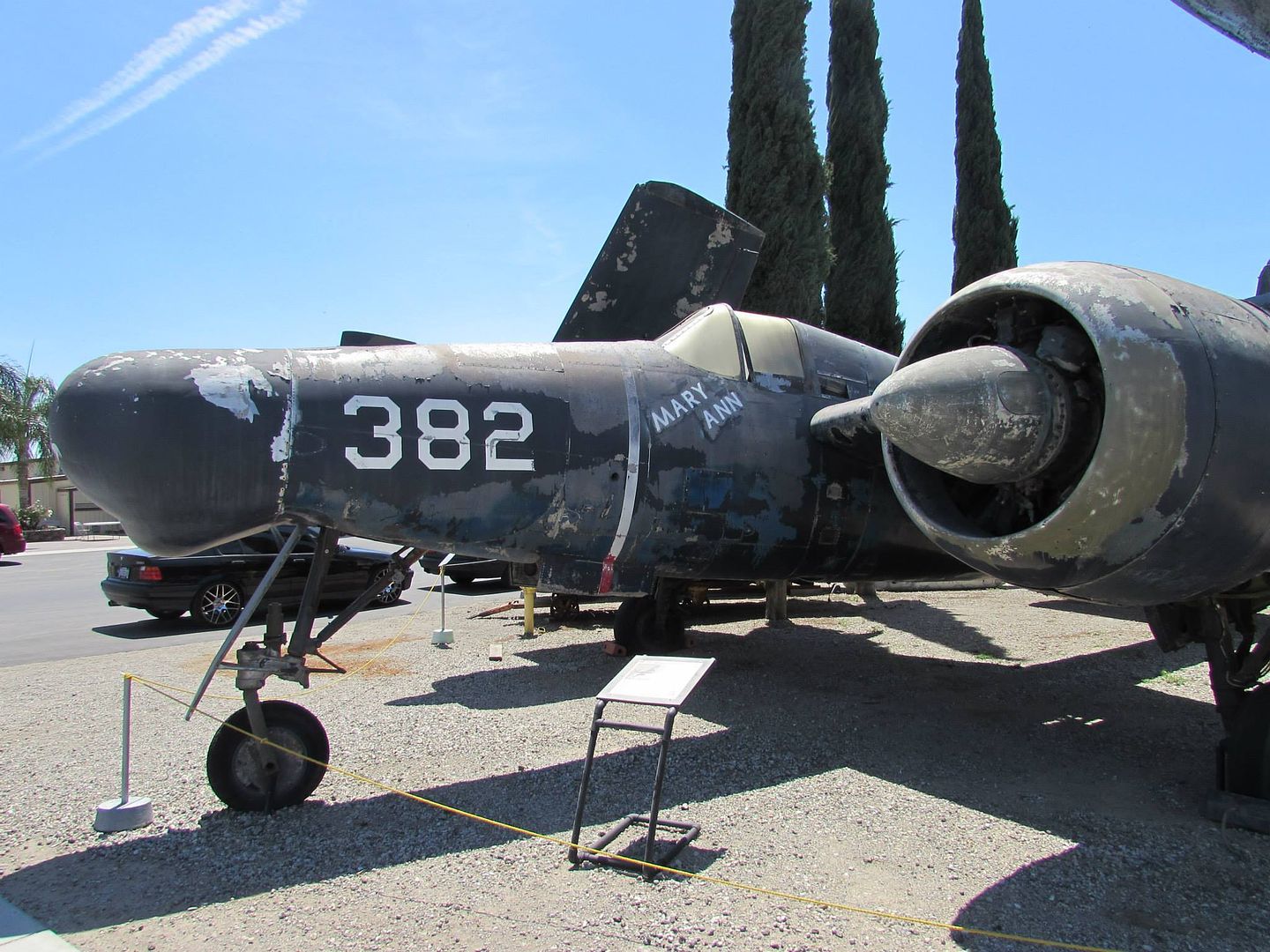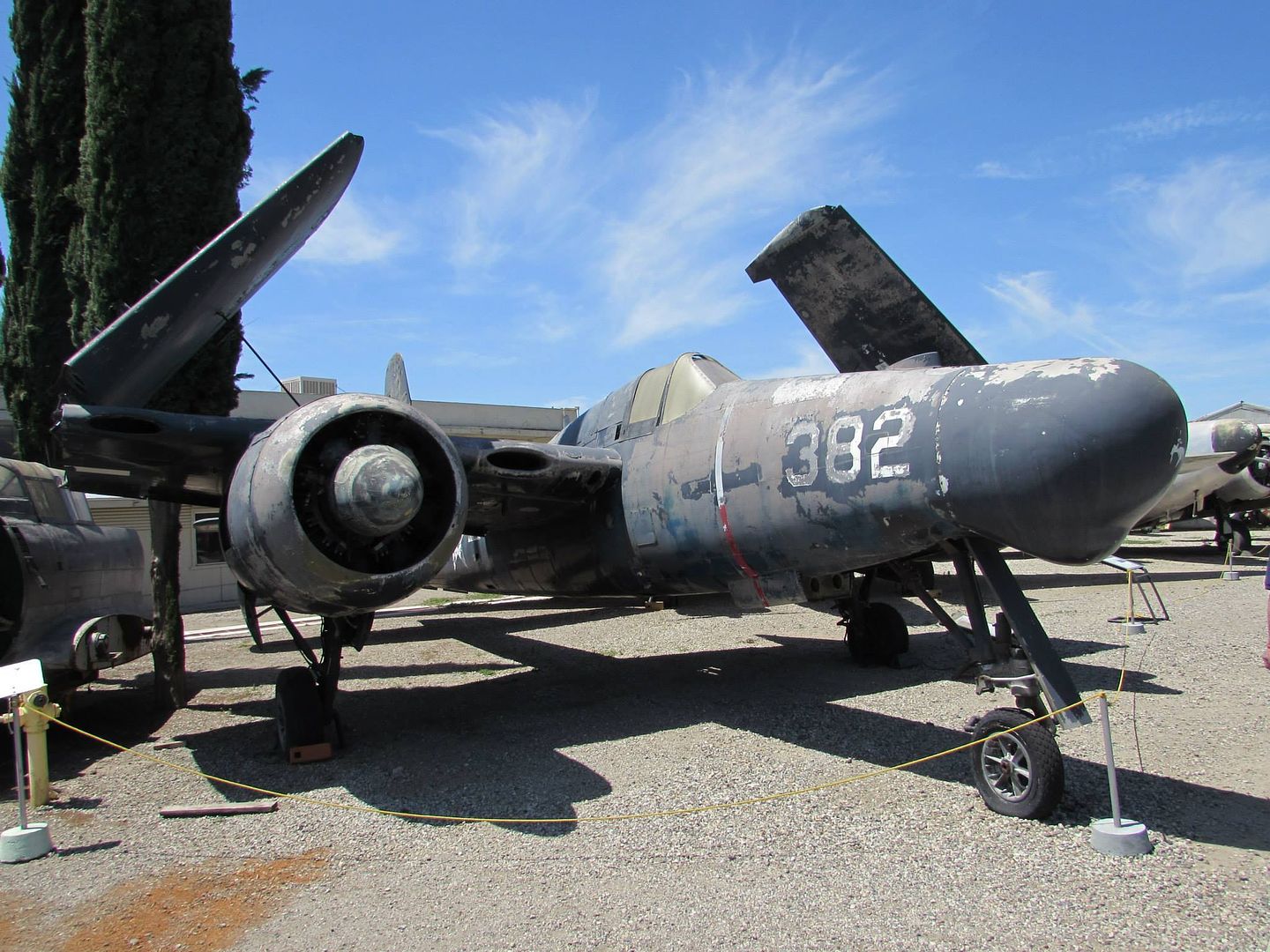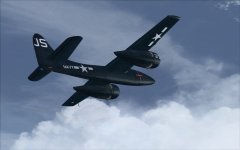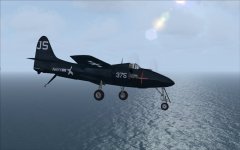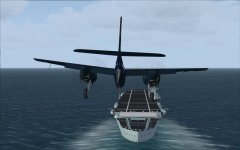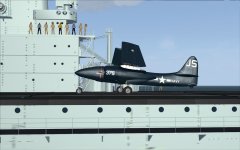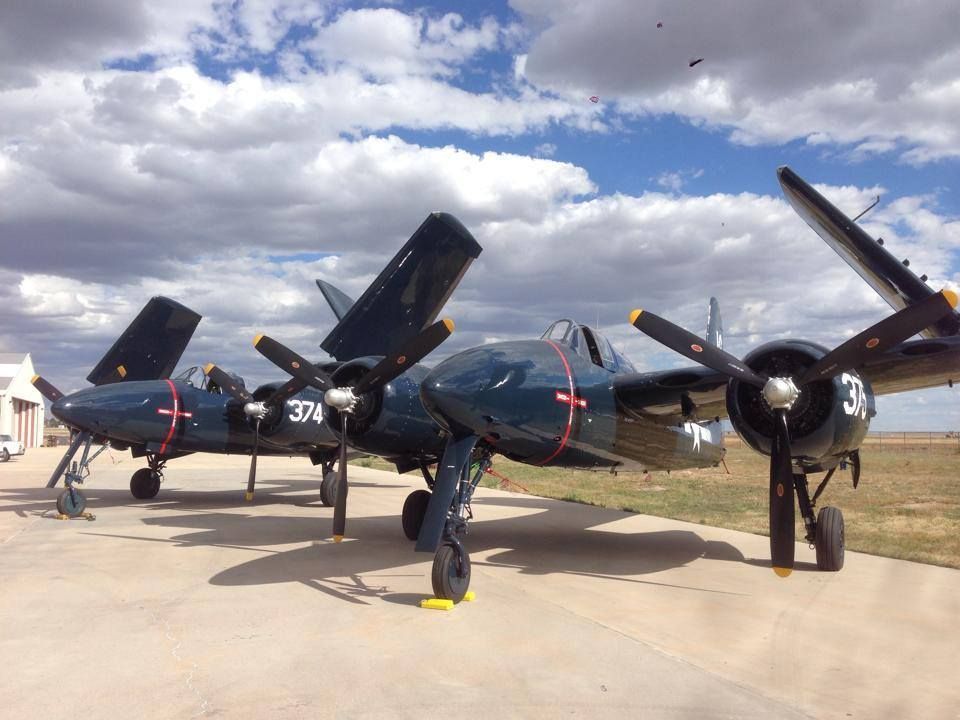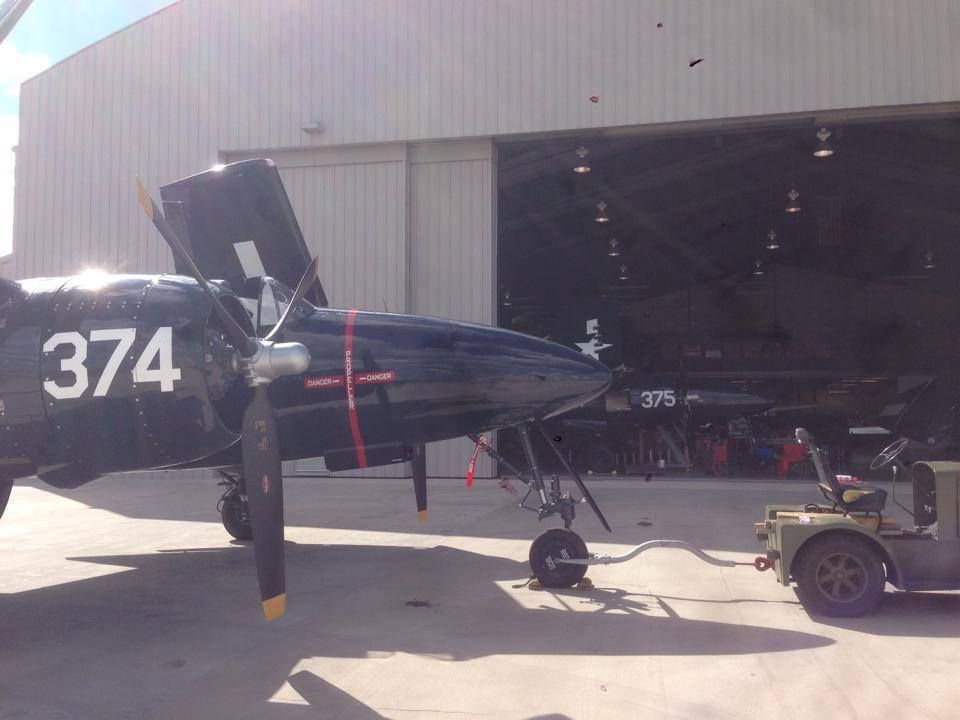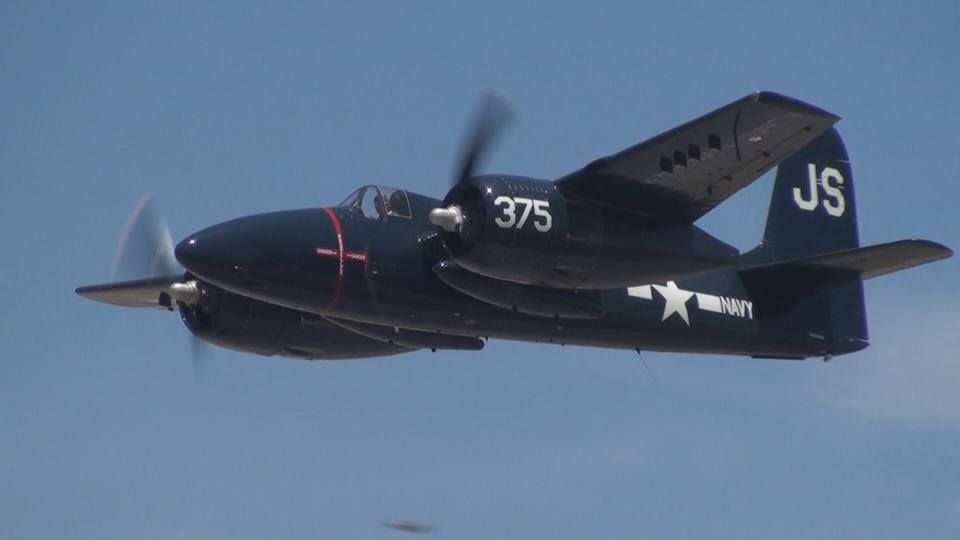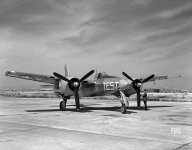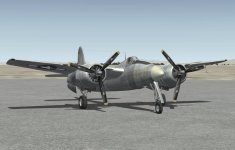I believe it was in this thread earlier that someone was asking about how the F7F stacks-up against the P-38, and what the reasoning was behind its design. One way to look at it is that the Tigercat's sheer performance outweighs that of the Lightning. Depending on the exact dash-model of the R-2800's used, and whether or not WEP was used, the engines combined produce up to about 4,200 hp, and the Tigercat itself weighs about 16,000 lbs empty/25,500 lbs gross. With the P-38, on the other hand, the engines combined produce 3,200 hp (WEP), and the airframe weighs about 13,000 lbs empty/21,500 lbs gross. In modern pilot reports, pilots flying the Tigercat for the first time always rave about its performance, where as pilots flying the P-38 for the first time usually comment that the Lightning doesn't have the amount of performance or nimbleness they expected. Clay Lacy has mentioned that the climb performance in a Tigercat is just like a Learjet. Some have gone on record as saying that the Tigercat was designed to take-on the Kamikaze attacks, but the truth is that the design originally came about very early in the war, even before the US entered into WWII, and of course that being far earlier than the first Kamikaze attacks. The intention of its design was simply to be able to greatly overpower any aerial threat that existed at the time, and meet several criteria, including being a fast interceptor and a capable ground-attack aircraft. Grumman would also propose to the Navy that it be built as a single-seat night fighter, which the Navy was keen on. The design development lasted much longer than normal, as by early 1942, following the attack on Pearl Harbor, the Navy requested that Grumman put all their effort into the development and production of the new F6F Hellcat (the contracts for the prototype Hellcat and Tigercat were actually both signed by the Navy on June 30, 1941, and the Navy had placed orders for thousands of more Hellcats than Tigercats). When the prototype F7F did finally first fly in November 1943 (about a year and a half after the prototype Hellcat first flew), it already began to meet or exceeded all expectations. The Tigercat was found to be faster at low altitudes than the both of its contemporaries, the Corsair and Hellcat (of which it was found to be about 70 mph faster). Obviously the only let down was from the problems with carrier suitability.
There were only 34 F7F-1 variants produced (as covered in this first pack of Tigercats), and most of these were only used for training and evaluation. The most numerous type was the F7F-3, of which 250 were produced, in three different variants - the F7F-3 single-seat fighter, the two-seat F7F-3N night-fighter, and the single-seat F7F-3P reconnaissance fighter. It was however the F7F-2N variant which was deployed first, with VMF(N)-531, and were to be based at Okinawa - however, with the atomic bombs being dropped on Japan, WWII ended a day after the Tigercats arrived on the island. After WWII, the Tigercats continued to operate in Navy and Marine service, and could still outperform the early jets that were being introduced. With the outbreak of the Korean War in 1950, VMF(N)-542 and their F7F-3N Tigercats were deployed to Kimpo, and began combat operations, with air patrols and night interdiction missions. So successful, VMF(N)-513 was then also equipped with Tigercats to serve in conjunction with their F4U-5N Corsairs. The last Tigercat combat mission was flown by VMF(N)-513 in April 1952. By the mid-50's, surviving Tigercats were flown to and stored at NAS Litchfield Park, pending disposal. The majority of the Tigercats that survive today were among those that were fortunately sold surplus and found their way into fighting fires as water tankers, beginning in the early late 50's/early 60's.



